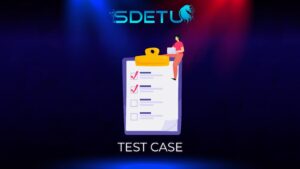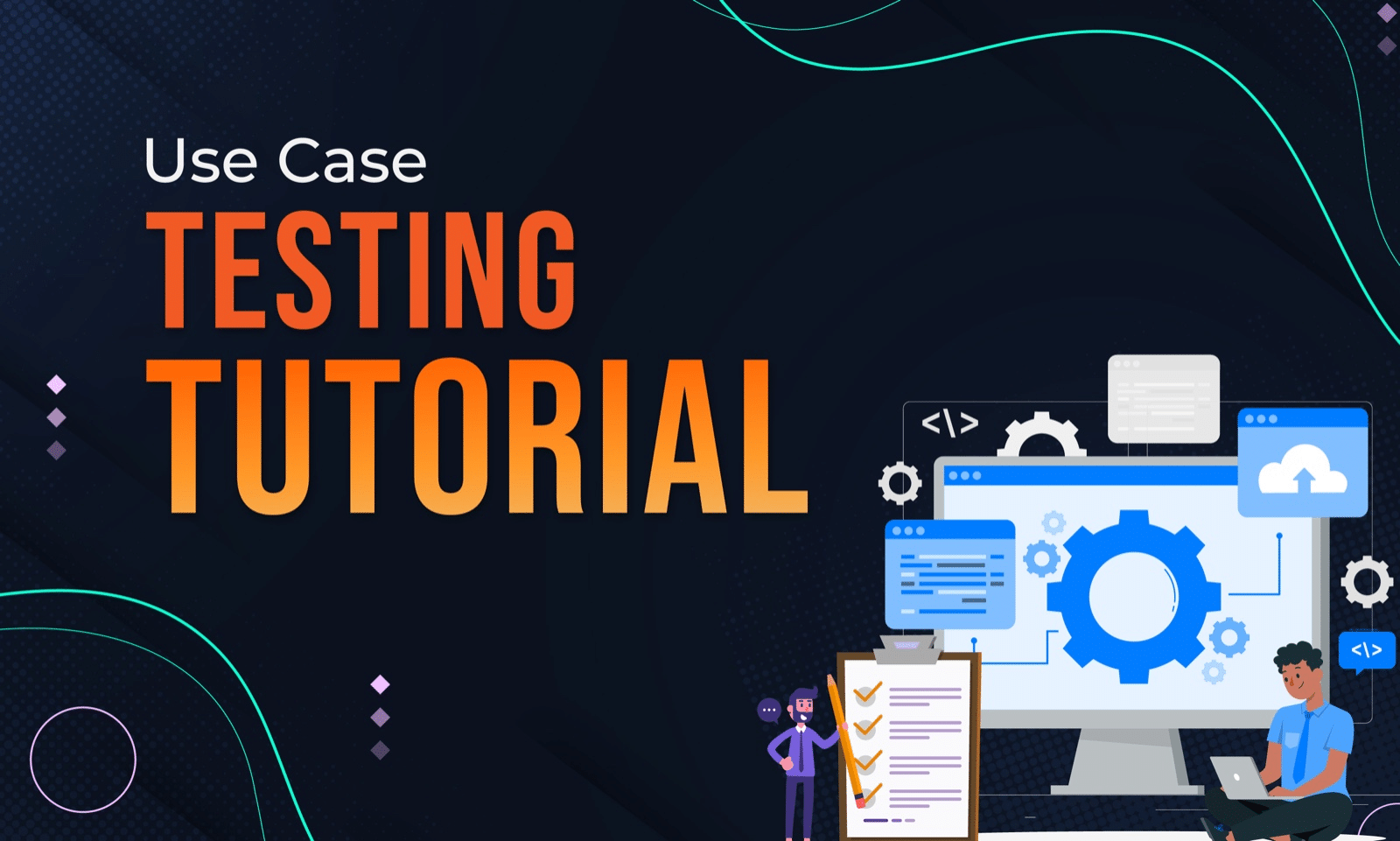Software Test Lifecycle (STLC) encompasses many complicated expressions and terms. If you are new or in this industry, you are often swamped with different software terminology and sometimes confused about what these terms mean. Two terms that can be complicated are “test plan” vs “test case.
This guide will break down these terms in order to help you understand better what their differences are.
What is a Test Plan?

A Test Plan is a detailed document that entails all the activities that should be conducted in a testing project. It outlines the objectives, strategies, scope, schedule, approach, and resources for testing the system or software. In simple terms, a test plan is a roadmap that guides you for the entire testing process as one way to ensure you deploy a desired software.
The Test Plan serves as a communication tool. Testers, QA managers, or product managers align their expectations using this document and ensure that everyone understands which testing strategy they would use and the overall objectives.
A well-defined Test Plan ensures that testing is in line with the project requirements. You would want to ensure when the software is in production life, the features are working as intended by catching defects early in the development stages.
As a tester or product manager, it is necessary to have a documented record of the testing approach of the system or software. A Test Plan serves this purpose, making it easier to reference the project’s lifecycle or when conducting audits.
Remember, project requirements can change, and your Test Plan should be flexible enough to adapt. It’s not just a document; it’s a dynamic tool that evolves with your project.
Key Components of a Test Plan
- Introduction: Your test plan must have an overview or purpose of the system under test.
- Objectives: You must clearly state the goals and objectives of the testing, such as bug detection or functionality assessment.
- Testing strategy: Describe your approach, including the tools to be used and testing techniques.
- Scope: Defining what must and should not be tested by specifying the components or features.
- Test environment: This includes hardware, software, and configurations that are required for testing for an effective setup.
- Resource allocation: Personnel, infrastructure, skills, and other resource requirements are identified for the testing.
- Test schedule: You need to provide a timeline for testing milestones, aligning with your desired project timelines.
- Risk assessment: Here, you identify potential risks, their effects, and how to manage them.
- Deliverables: Test plan lists all the documents that should be produced during testing.
- Approval: It is important to share your outlines for the stakeholders to review and approve the overall test plan.
Creating Effective Test Plans
Creating Effective Test Plans Creating effective test plans is crucial for ensuring comprehensive software testing. Here are some strategies to consider:
Requirement Analysis: Start by understanding your project requirements. This ensures your test plans align with the software’s intended functionality.
Set Clear Objectives: Clearly define your testing objectives and goals. These will serve as your guide throughout the testing process.
Scope Definition: Clearly outline what will and won’t be tested. This sets boundaries and makes the testing process more efficient.
Risk Assessment: Identify any potential risks or challenges you might face. Include strategies for mitigating these risks in your test plan.
Determine Test Levels: Decide on the types of testing that will be included in your plan, such as integration testing, system testing, etc.
Tools You Might Need
Requirement Management Tools: Platforms like JIRA and Confluence can help align your test plans with project requirements.
Test Data Management Tools: Software like Tosca and Informatica can assist in managing your test data effectively.
Collaboration Tools: Effective communication is key. Tools like Slack or Microsoft Teams can facilitate this.
Test Automation Tools: For automating your test cases, consider using Appium or Selenium, especially for regression testing.
Defect Tracking Tools: Use tools like Mantis or JIRA for tracking and managing any defects that arise during testing.
Reporting Tools: For presenting your test results, consider using reporting tools like Power BI or Tableau.
Test Plan Example
Consider a scenario in which a team develops a web application. Here is an example of a well-crafted sample test plan.
What is a Test Case?

A Test Case is a set of instructions that specify how a software application should be tested. Test cases have specific testing elements that execute a test, including the test data, action to be taken, test results, and criteria that can be used to determine pass or fail.
Test Cases are drafted based on the software requirements, ensuring that software features function properly and meet user expectations. A well-defined Test Case makes it easy for testers to identify and report defects, including software errors and usability problems, which is important for timely resolutions.
Also, Test Cases are useful assets for regression testing. They ensure verification of new code changes to make sure that existing functionalities are not affected, preventing new defects.
Crafting Detailed Test Cases
Creating detailed test cases is important for effective software testing. To achieve the utmost success in your testing process, here are the steps you can use to craft detailed test cases:
- Understanding requirements: Start by figuring out your project’s requirements or specifications. Simply know what your software is supposed to do.
- Identify test scenarios: Breakdown your system or software functionalities into test scenarios. Each scenario should focus on assessing the software’s behavior.
- List test steps: Describe the actions you should perform to execute the test scenario.
- Specify test data: Identify inputs or data that are required for the test. Include both valid and invalid data.
- State expected results: Define what are the expected outcomes at the end of each test scenario.
Best practices for crafting detailed test cases:
- Simplicity: Use simple language that anyone can understand when reading your test cases.
- Reusability: Design test cases that are used again for regression testing to save time.
- Traceability: Ensure the test cases are linked to the testing requirements and that every aspect is covered properly.
- Prioritization: The test cases should focus on the critical functionalities or features of the software.
- Consistency: Maintain a specific format or style for all test cases, making them easier to read.
Test Case Examples
Let’s look at a simple table example of a detailed test case scenario for an online store or an e-commerce site to check whether the search bar is and login page working.
Test Case: Search Functionality Testing
Test Case ID | Test Case Description | Test Steps | Expected Results | Pass/Fail |
TC-001 | Search with Valid Keyword | 1. Navigate to the homepage of the e-commerce site. 2. Locate the search bar. 3. Enter a valid keyword (e.g., “shoes”). 4. Click the “Search” button. | Relevant product listings containing the keyword “shoes” are displayed | Pass |
TC-002 | Search with Empty Keyword | 1. Navigate to the homepage of the e-commerce site. 2. Locate the search bar. 3. Leave the search bar empty. 4. Click the “Search” button. | An appropriate error message is displayed (e.g., “Please enter a keyword” | Pass |
Test Case: Login Page Testing
Test Case ID | Test Case Description | Test Steps | Expected Results | Pass/Fail |
TC-003 | Login with Valid Credentials | 1. Navigate to the e-commerce site’s login page. 2. Enter a valid username and password. 3. Click the “Login” button. | User is successfully logged in and redirected to their account/dashboard page | Pass |
TC-004 | Login with Invalid Credentials | 1. Navigate to the e-commerce site’s login page. 2. Enter an invalid username and/or password. 3. Click the “Login” button. | An appropriate error message is displayed (e.g., “Invalid credentials”) | Pass |
Test Plan vs Test Case: Key Differences
| Aspect | Test Case | Test Plan |
| Purpose | Specifies detailed testing steps for a specific aspect | Outlines testing strategy, scope, and approach |
| Scope | Focuses on testing a specific feature or scenario | Encompasses the entire testing process |
| Content | Test case ID, description, steps, data, expected results, etc. | Objectives, strategy, environment, schedule, etc. |
| Audience | Testers | Project managers, stakeholders |
| Level of detail | Detailed and specific | High-level |
| Life cycle stage | Developed as testing progresses | Created early in the project |
Conclusion
Comprehensive Test Plans and Test Cases ensure software quality, functionality, and reliability. Both are essential when crafted effectively, making it easy to detect defects, verify functionalability, and enhance the overall quality of software. By leveraging the best tools, good practices, and effective communication among team members, an organization can be able to reduce risks and deliver a quality software product that meets user expectations.
Future trends in testing continue to be driven by automation and AI. The automation tools continue to advance, enabling faster and more efficient testing. Also, the adoption of a cloud-based testing environment and containerization enhances flexibility in testing processes catering to the needs of native developments.
Ready to transform your testing processes? Join our academy and experience the difference firsthand.
We have courses that get you started in this field and guarantee you enough experience to be among the leading industry players.
Thanks for reading, and I hope this helps! Let me know what you think in the comments below.
Frequently Asked Questions
What is the difference between a test plan and a test case?
A test plan is a document outlining the testing strategy, scope, objectives, goals, and resources for the testing project. In contrast, a test case is a detailed document with step-by-step instructions for testing specific software functionalities.
Can you provide examples of test plans and test cases?
A test plan for an e-commerce website might outline objectives and a schedule for testing. In contrast, a test case for the e-commerce’s login functionality could have specific steps like entering credentials, clicking “Login,” and executing a pass or successful access.
Why is it important to distinguish between a test scenario, test plan, and test case?
Distinguishing between test scenarios, test plans, and test cases is important for clarity and effective testing. Test scenarios define what should be tested, test plans outline how the test will be conducted, and test cases are step-by-step instructions for the actual testing.
What are the key components of a test plan and a test case?
In a test plan, key components include objectives, test environment, resource allocation, schedule, approval processes, and reporting. In a test case, key components include description, preconditions, test steps, test data, expected results, and pass/fail criteria.
How does a test strategy relate to a test plan and a test case?
A test strategy sets guidelines for testing activities for a project. A test plan outlines how the strategy will be implemented. Test cases are specific instructions within the test plan, defining how functionalities will be tested in alignment with the test strategy.
What are some best practices for creating effective test plans and test cases?
Best practices for creating effective test plans and test cases include understanding your project requirements, setting clear objectives, maintaining simplicity, collaborating, and regularly updating documentation.






